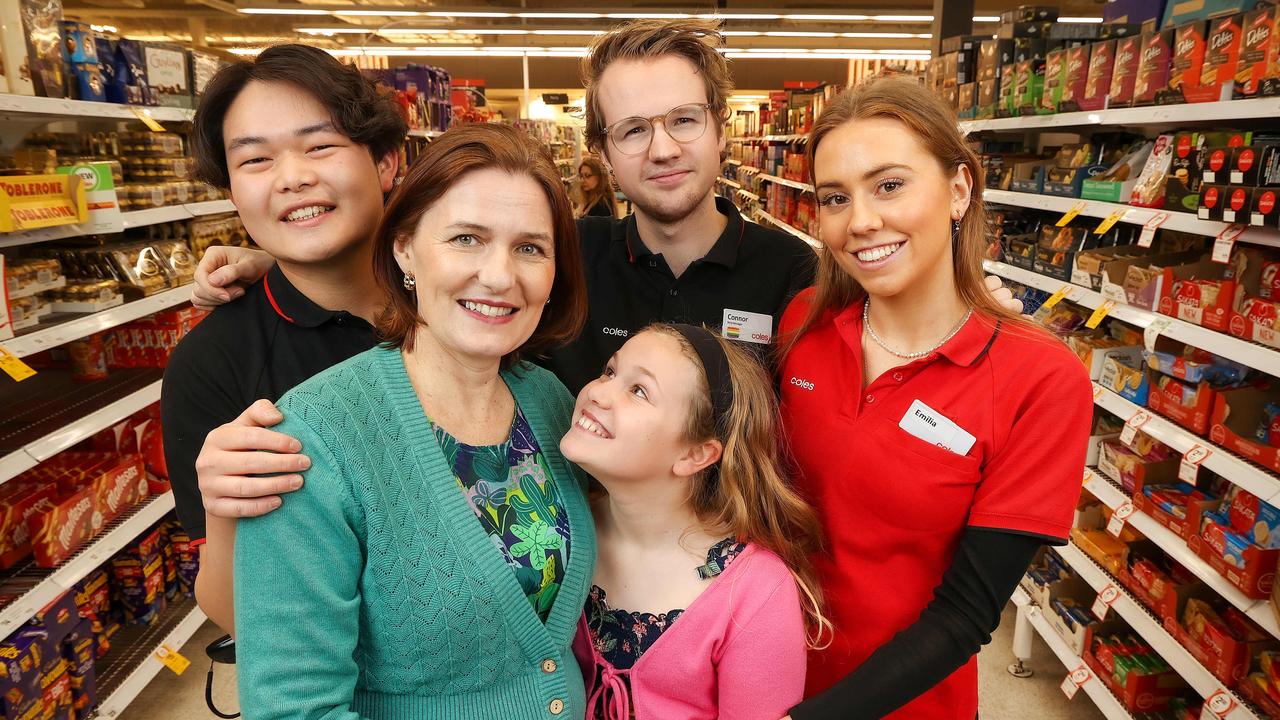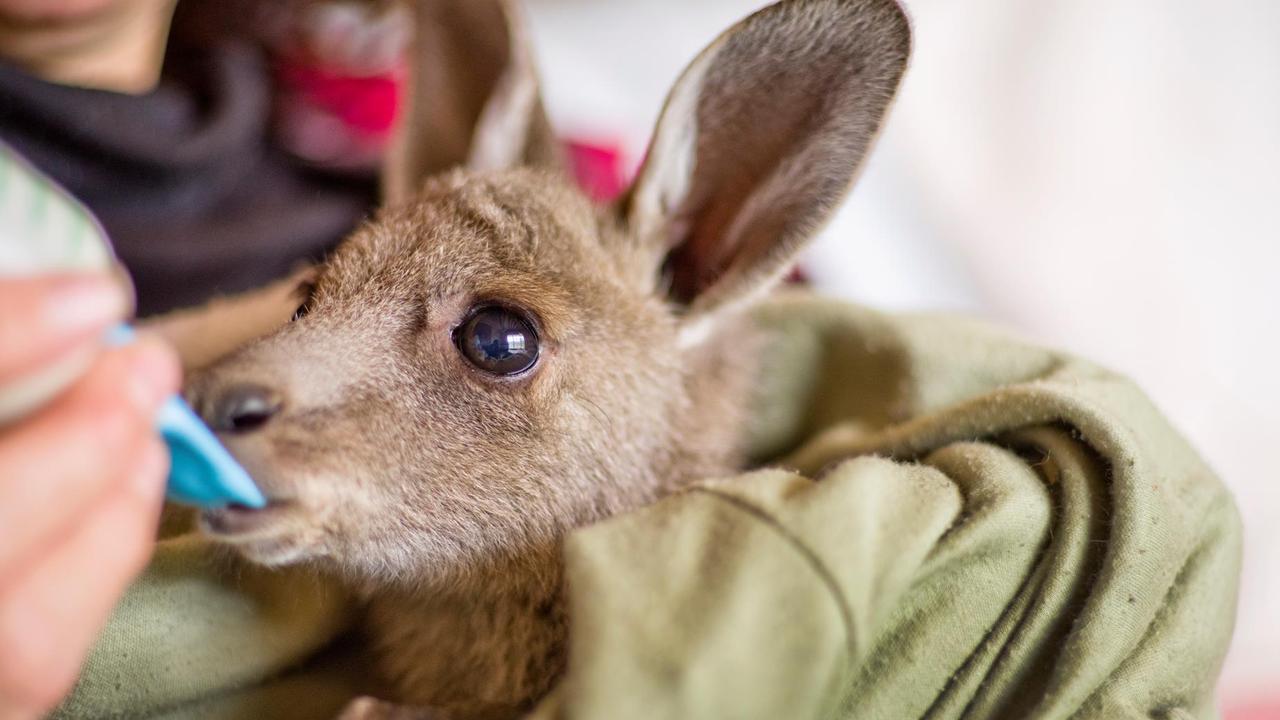10 great inventions Victoria gave the world
AUSTRALIANS have been responsible for some amazing inventions — and plenty of them were created here. These are the top 10 inventions Victoria gave the world.
VIC News
Don't miss out on the headlines from VIC News. Followed categories will be added to My News.
IF necessity is the mother of invention, here in Australia, our isolation from the rest of the world is probably the father.
When the chips were down and we needed to find a way ahead, Australians have had to rely on themselves to get the job done.
We have been responsible for some amazing inventions — and plenty of them were dreamt up right here in Victoria.
Here are 10 inventions that Melbourne and Victoria gave the world. Some might be familiar, but some will really surprise you.
Relenza: the ‘flu fighter
The ‘flu doesn’t sound like a big deal, but it affects hundreds of millions of people a year and, shortly after the end of World War I, an influenza pandemic killed at least 20 million people around the world, while avian and swine ‘flu pandemics have occurred in more recent times.
One of the greatest blows against influenza was struck right here in Melbourne — one of dozens of world-leading medical advances that emanated from our city.
Researchers from the CSIRO, Monash University and the Victorian College of Pharmacy first created the antiviral drug Relenza in 1989, with funding from Australian biotechnology company Biota and, later, pharmaceutical giant GlaxoSmithKline.
The drug was released commercially in the 1990s and can be used against all strains of influenza including avian and swine ‘flu.
The full-length feature film
When we think of movies, we think of Hollywood and, to a lesser extent, Bollywood, but we could so easily have had Collingwood or Burwood on that list, too — the Southern Hemisphere’s own glitzy celluloid mecca.
Why? Because the world’s first feature-length film was created right here in Melbourne in 1906. It was The Story of the Kelly Gang, a silent film of just over one hour’s duration that traced the life and death of the Kelly Gang.

Ned Kelly hanged for his crimes only 26 years before the film.
The details are a little hazy John and Nevin Tait, part of the Tait family that owned the Athenaeum Hall (now the Athenaeum Theatre) in Collins Street and film exhibitors William Gibson and Millard Johnson teamed up to produce the film, based on the success of various Kelly-themed stage plays.
The Taits often showed short films as part of their concerts at the Athenaeum Hall, and Millard and Gibson had experience with handling and developing film.
Brothers John, Frank and Charles Tait are most often credited for writing the script, and either Charles Tait or actor Sam Crewes directed it.
Actors John Forde (as Dan Kelly) and Elizabeth Tait, Charles’ wife, who was a stunt double for the actor who played Kate Kelly, are the only actors positively identified as starring in the film.
Most of the production took place on a property in Heidelberg belonging to the family of Elizabeth Tait.
It was a roaring success. Trial screenings in country Victoria in late 1906 recouped the production’s 400-pound budget.
It played to full houses at the Athenaeum Hall for five solid weeks, complete with live sound effects and narration.
It was banned in Kelly Country in Victoria’s northeast but toured Australia for many years and was toured through New Zealand and the UK.
The multiple-outlet powerboard and the electric timer

Just about everyone in the developed world has used a Kambrook appliance, whether they realise it or not.
Frank Bannigan established Kambrook in the garage of his home in Kambrook Road, Caulfield.
In 1972, staff member Peter Talbot developed the four-point powerboard because of Frank’s frustration at never having enough power points available to test the products the company was making.
Seeing the commercial potential, Frank rushed the powerboard to the market but never patented the idea. So, the company missed out on millions in royalties as copycat products hit the shelves across the globe.
Once the power outlet issue was sorted, the Kambrook team turned to the problem of having to switch on and off the appliances they were testing for durability.
The solution? The plug-in electric timer. Those timers did all the work for the technicians, and opened up another lucrative commercial idea that went international.
Disposable latex gloves
Rubber gloves have existed since the 19th century but in the medical world, they require sterilisation after each use and may inhibit the dexterity of a surgeon or a nurse.
It took a Melbourne company, Ansell, to improve on the idea.
Using the same technology it had harnessed to manufacture condoms, in 1964 the company developed disposable latex gloves — intended for a single use and much thinner than rubber gloves while still protecting the user from infection.
The McCafe
Melbourne’s coffee culture spawned a worldwide phenomenon in 1993 when McDonald’s franchisee Ann Brown established the world’s first McCafe in her central Melbourne store in 1993.
The move proved highly profitable. Within a decade, McCafe was the largest coffee chain in Australia, and Aussie Macca’s outlets with a McCafe collected an average of 15 per cent more revenue as the combination of hot coffee, toasties and sweet pastry treats drew the punters in.
This caught the eye of McDonald’s executives in the United States including late Aussie-born chief executive officer Charlie Bell, and a coffee phenomenon was born.
The first American McCafe opened in Chicago in 2001. The McCafe concept has since spread to dozens of countries.
Refrigeration

James Harrison had plenty of strings to his bow — printer, journalist, founder and editor of the Geelong Advertiser, editor of The Age, local and Victorian politician and the inventor of mechanical refrigeration among them.
Scottish-born Harrison specialised in chemistry at Anderson’s University and the Glasgow Mechanics Institution and trained as a printer’s apprentice and a compositor before arriving in Australia in 1837.
He joined John Pascoe Fawkner’s Port Phillip Patriot in 1839 as a compositor and later editor, buying the newspaper’s original printing press when Fawkner upgraded, and established the Geelong Advertiser in 1840.
While cleaning the newspaper’s movable type with ether, he noticed that when the ether evaporated it made the metal type cold — and his interest in refrigeration and ice-making began.
He set up his first ice machine by the Barwon River in 1850, and his first commercial ice-making machine four years later.
His ether vapour-condensing system received its first patent in Victoria in 1855, with patents for the process and his machine following in London in 1856 and 1857.
Breweries and the meat-packing industry took up the technology with gusto.
He won a gold medal at the Melbourne Exhibition in 1873 by proving that meat frozen for months using his technique remained edible.
The secret ballot
The secret ballot, also known internationally as the Australian ballot, was the brainchild of Victorian MLC Henry Samuel Chapman, who drafted the legislation that ended a system in which the names of all voters and the votes they cast were posted publicly.
This system, common in fledgling democracies around the world, came from the time when only male property owners were deemed responsible enough to cast their votes for the common good, rather than just for personal gain. As a means of keeping the voters honest, their names and votes were posted in public.
When suffrage was granted to all men, it greatly increased the chances of intimidation or corruption.
Under Chapman’s system, votes were secret and cast on a printed ballot paper by crossing out any candidate the voter did not wish to elect.
Chapman’s revolutionary bill became law in Victoria in March 1856 and was adopted weeks later in South Australia. It soon became the standard for democracies around the world.
The Furphy Water Cart

Shepparton blacksmith and wheelwright John Furphy created a handy agricultural tool and a famous Australian slang word with his Furphy water cart.
Furphy saw the need for a horse-drawn water tank in the 1880s, when few houses had water tanks to collect run-off from roofs and people were forced to transport water for domestic and stock use on timber drays using barrels or casks.
The Furphy Water Tank was made of iron and steel cast in the Furphy foundry, with the tank carefully balanced on axles to ease the load on the horse drawing it, and the Furphy name emblazoned on the side.
The water cart made it easier to collect and transport water — vital in our dry climate.
By World War I, the Furphy Water Cart was a common sight at Anzac camps around the world.
So the story goes, the carts were often placed near latrines and were often out of sight from the officers, giving troops the chance to discuss the often unreliable news of the day. The “furphy”, a falsehood presented by a speaker as fact, was born.
Modern Furphy Water Carts, towed by cars and fitted with rubber tyres, are still in production today.
The electric drill
Power tool lovers can thank electrical engineer Arthur Arnot for their obsession with hardware.
Arnot came to Australia from Scotland in 1889 on a two-year contract to build an alternating current power plant in Melbourne, and patented his design for the electric drill on August 20 that year.
He became the Melbourne City Council electricity supply company’s first electrical engineer in 1891, where he oversaw the city’s first comprehensive street lighting system and designed and managed the Spencer Street power station.

The ute
It was the Aussie automotive design that took the world by storm, and remains a fixture in the driveways of tradies, farmers and car lovers across the globe to this day.
The coupe utility was the brainchild of Lewis Bandt, a young Ford designer based in Geelong, who in 1932 was handed a letter from the wife of a Gippsland farmer who asked: “Why don’t you build people like us a vehicle to go to church in on Sunday, and which can carry our pigs to market on Monday?”.
In response, Bandt took the front half of a Ford V8 Coupe road car and grafted an integrated steel tray onto the rear.
Unlike many of the light trucks of the time, which were built with an open-sided cowl for the driver and a passenger, Bandt’s coupe utility was based on a car and offered car-style cabin comfort with a tray to carry loads at the back.
The revolutionary design was so impressive that Henry Ford himself met Bandt in 1935 to evaluate two of the new utes.
“Mr Ford called in his men to look at the coupe utility. They took one look and asked him what it was. Mr Ford replied: ‘It’s a kangaroo chaser and we are going to build them here’,” Bandt said after returning to Australia.
The world’s carmakers took notice. Bandt’s design has spawned hundreds of similar models since 1934.


